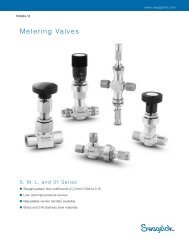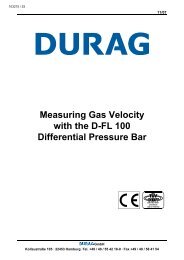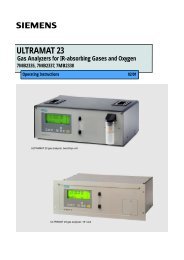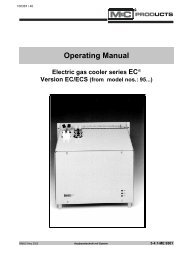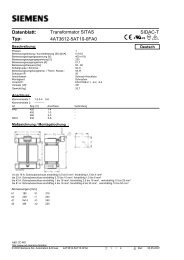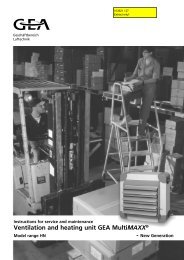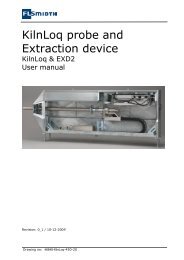HM 1400 TRX Total Mercury Analyser - Webshop, Gas Analysis ...
HM 1400 TRX Total Mercury Analyser - Webshop, Gas Analysis ...
HM 1400 TRX Total Mercury Analyser - Webshop, Gas Analysis ...
- No tags were found...
You also want an ePaper? Increase the reach of your titles
YUMPU automatically turns print PDFs into web optimized ePapers that Google loves.
4. Theoretical foundationsother compounds. This representation is only intended to show how thereactor material deals with the various incoming compounds.The sampling gas brings all components occurring in the flue gas into contactwith the reactor material. The reactor material itself consists of a carbonsubstrate, whose surface is impregnated with carbonates and hydroxides. Ifthe temperature is set correctly the ionic mercury compounds are reduced toelemental mercury, while incoming elemental mercury passes through thereactor chemically unchanged. The acid components that are also contained inthe flue gas (e.g. SO 2 , HCl, Cl 2 , NO 2 ), on the other hand, are chemically fixedon the surface of the solid reactor material without influencing the reducingeffect of the reactor material. The reason for this behaviour is simple, as theacid components form the relevant salts with the hydroxides and carbonates -if the temperature is set correctly, the reactor material releases just as muchcarbon monoxide as is necessary to reduce ionic mercury to elementalmercury. As carbon monoxide is present as gas at the reaction temperature,the salt formation cannot affect this reaction. The reactor temperature is set insituduring commissioning. The temperature is regulated directly by the PLC.The optimal temperature range is between 270 °C and 300 °C.to detectorfrom stackdhg<strong>1400</strong>tr_03_001Colour legend: Reactor material NO xHg 0 HCl, Cl 2Hg N+ SO 2Figure 4.2: Operating principle of the thermocatalytic reductionThe gas/liquid mixture is then physically dried and analysed in the photometer.4.3 The UV photometerThe photometer is schematically represented in the following illustration. Thelamp distributes its light onto the measuring and reference cuvettes through aslit diaphragm. The photodiodes are matched and measure any weakening ofthe light intensity in both cuvettes in relation to each other. The weakening ofthe light comes about because the mercury atoms absorb photons of suitableenergy (light from wavelength 253.7 nm), and consequently individualelectrons in a higher energy state are lifted. After a very short dwell time < 10 -634 <strong>HM</strong> <strong>1400</strong> <strong>TRX</strong>





